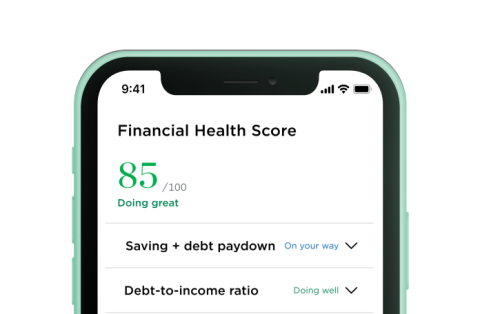Best Retirement Plans of 2024: Choose the Right Account for You

Many or all of the products featured here are from our partners who compensate us. This influences which products we write about and where and how the product appears on a page. However, this does not influence our evaluations. Our opinions are our own. Here is a list of our partners and here's how we make money.
The investing information provided on this page is for educational purposes only. NerdWallet, Inc. does not offer advisory or brokerage services, nor does it recommend or advise investors to buy or sell particular stocks, securities or other investments.
Gone are the days when workers could count on an employee pension plan and Social Security to cover their costs during those golden years. Today, pensions are a rarity and Social Security isn’t a slam-dunk for future generations.
So what's the best retirement plan out there now? Well, it depends on how you want to invest and what's available to you. If you have access to a retirement plan at work, such as a 401(k), read more about defined contribution plans.
If you’ve maxed out your 401(k) or you don’t have a retirement plan at work, jump to our section on the pros and cons of IRAs, including traditional and Roth.
If you're self-employed or own a small business, read about retirement accounts designed specifically for you, including the SEP IRA, solo 401(k), SIMPLE IRA and profit-sharing plans.
» MORE: If you want someone to help you, read our guide on how to choose a financial advisor.
NerdWallet rating 4.9 /5 | NerdWallet rating 5.0 /5 | NerdWallet rating 4.1 /5 |
Fees $0 per online equity trade | Fees $0 per trade | Fees $0 per trade |
Account minimum $0 | Account minimum $0 | Account minimum $0 |
Promotion None no promotion available at this time | Promotion None no promotion available at this time | Promotion Get up to $700 when you open and fund a J.P. Morgan Self-Directed Investing account with qualifying new money. |
Defined contribution plans
There are two main types of employer-sponsored retirement plans:
Defined benefit plans: In years past, some companies guaranteed workers a set benefit in retirement, a pension plan. The company kicked money into a single retirement pool, and the pension plan invested it. These plans are rare now. Still, you might find an employer that makes annual contributions to a retirement plan based on a similar formula but without any guarantee of the benefit provided in retirement.
Defined contribution plans: These are now the most common type of workplace retirement plan, and that's where we will focus more of our attention. Employers set up these plans, such as 401(k)s and 403(b)s, to enable employees to contribute to an individual account within the company plan — typically via payroll deduction. If you come across the words “company match” in your employee benefits paperwork, that means you’ve got access to some free money: the company contributes to your account based on your personal contribution level (for example, a dollar-for-dollar or 50-cents-on-the-dollar match, up to, say, 6%).
» Crunch the numbers with our 401(k) calculator
Main advantages of defined contribution plans:
They're relatively easy to set up and maintain. Most employers offer an automatic payroll deduction option for deposits into the plan, and the retirement plan administrator (a separate financial institution) handles statements, disclosures and updates.
Your employer might match a portion of your contribution.
You can contribute more per year to a 401(k) than you can to an individual retirement account (IRA).
Employee contributions to traditional 401(k) plans reduce your taxable income for the year. You'll owe taxes on the withdrawals you make in retirement. Roth 401(k) contributions don't offer any immediate tax break because contributions are made with after-tax money. However, qualified withdrawals from Roth 401(k)s are tax-free in retirement.
The Roth 401(k) has no income restrictions, unlike the Roth IRA.

Main disadvantages of defined contribution plans:
Investment choices within employer-sponsored retirement plans are often limited to certain funds, leaving you with fewer options than in an IRA.
Management and administrative fees can be high and erode your investment returns over time.
New employees might have a waiting period before they can contribute to a plan.
Employer match contributions might be subject to a vesting schedule, in which money becomes the property of employees only after they have worked for the company for a certain amount of time.
» Learn more: How to decide if it’s better to invest in an IRA or a 401(k).
5 types of employer-sponsored retirement plans
Pros | Cons | Good to know | |
|---|---|---|---|
401(k)/Roth 401(k) |
|
| Roth 401(k)s no longer require you take minimum distributions. |
403(b) (aka TSA or Tax-Sheltered Annuity) | Optional 15-year rule allows catch-up contributions up to a $15,000 lifetime max. | Investments sometimes limited to high-fee mutual funds and/or variable annuity multiyear contracts. | Employees with 15 years of service might qualify for $3,000 in catch-up contributions each year for 5 years. |
457(b) |
|
| Participants might qualify for the saver’s credit. |
Defined Benefit Plan |
| Complex and costly to establish. | Participants have less control over contribution amounts and investments. |
TSP (Thrift Savings Plan) |
|
| Roth and traditional versions available. |
Sources: IRS.gov, TSP.gov, 403bwise.com.
Individual retirement accounts (IRAs)
The IRA is one of the most common retirement plans. An individual can set up an IRA at a financial institution, such as a bank or brokerage firm, to hold investments — stocks, mutual funds, bonds and cash — earmarked for retirement.
The IRS limits how much an individual can contribute to an IRA each year, and depending on the type of IRA, decides how the funds are taxed — or protected from taxation — when a participant makes deposits and withdrawals.
Main advantages of IRAs
They put you in the driver’s seat. You choose the bank or brokerage and make all the investment decisions, or hire someone to make them for you.
Depending on the type of IRA you choose — Roth or traditional — and based on your eligibility, you can decide how and when you get a tax break.
IRAs usually provide a much wider range of investment choices than workplace retirement plans do.
If you qualify for both a Roth and a traditional IRA in the same year, you can contribute to both. Your total contributions must remain below the combined IRA contribution limit. But the "twofer" does get you some tax diversification in your retirement portfolio.
Main disadvantages of IRAs
Another consideration in the IRA vs. 401(k) debate, is that IRAs have lower annual contribution limits than most workplace retirement accounts:
In 2024, the maximum amount you can put in an IRA is $7,000. If you're 50 or older, you can contribute an additional $1,000 as a catch-up contribution. You can contribute to an IRA for 2024 through the April tax filing deadline in 2025.
The annual maximum for 401(k)s, on the other hand, is $23,000 (or $30,500 if 50-plus) in 2024.
Roth IRA contribution limits are based on your modified adjusted gross income. The amount you're allowed to contribute begins to decrease once your income hits $146,000 (single taxpayers) or $230,000 (married filing jointly taxpayers) in 2024.
With a traditional IRA, anyone can contribute, no matter their income. But your ability to deduct your contributions may be limited if you (or your spouse) have a retirement plan at work.
Choosing between a Roth and a traditional IRA requires you to guess what your tax situation will be when you start drawing from the account. For some, the immediate tax break of the traditional IRA might make that account more appealing; for others, the prospect of tax-free income in retirement makes the Roth the clear winner. Get the details in our Roth vs. traditional IRA comparison.
» MORE: See the traditional IRA income and contribution limits
Retirement plans for small-business owners and self-employed people
According to a March 2023 Bureau of Labor Statistics report, 73% of workers have access to a workplace retirement plan. At companies with fewer than 100 workers, about 59% of employees have access to a retirement savings plan.
If you work at or run a small company or are self-employed, you might have a different set of retirement plans at your disposal. Some are IRA-based, while others are essentially single-serving-sized 401(k) plans. And then there are profit-sharing plans, which are a type of defined contribution plan.
Main advantages of plans for self-employed people:
Plans for contractors, self-employed people and small-business owners have higher contribution limits than most employer plans and IRAs.
These plans often offer more investment choices than employer-sponsored plans, such as 401(k)s.
Many of these plans are easy to set up and therefore not much of a burden on the small-business owner.
You might be able to set up your account at a financial institution you already use.
If you're self-employed, you can give yourself a generous profit-sharing contribution, plus make your elective deferral — with catch-up — as the employee.

Get a custom financial plan and unlimited access to a Certified Financial Planner™
NerdWallet Advisory LLC
Main disadvantages of plans for self-employed people:
Employer contributions might be completely discretionary, putting more of the savings burden on employees/plan participants.
Setup and administrative duties for more complicated plans fall on the employer — which might be you.
Some plans have narrower parameters for allowable early withdrawals than traditional IRAs and employer-sponsored retirement plans.
Loans from some plans must meet certain requirements and require the participant to apply.
For self-employed people, the profit-sharing cap boils down to about 20% of net profits because of Federal Insurance Contribution Act taxes due on net profits.
On a similar note...











